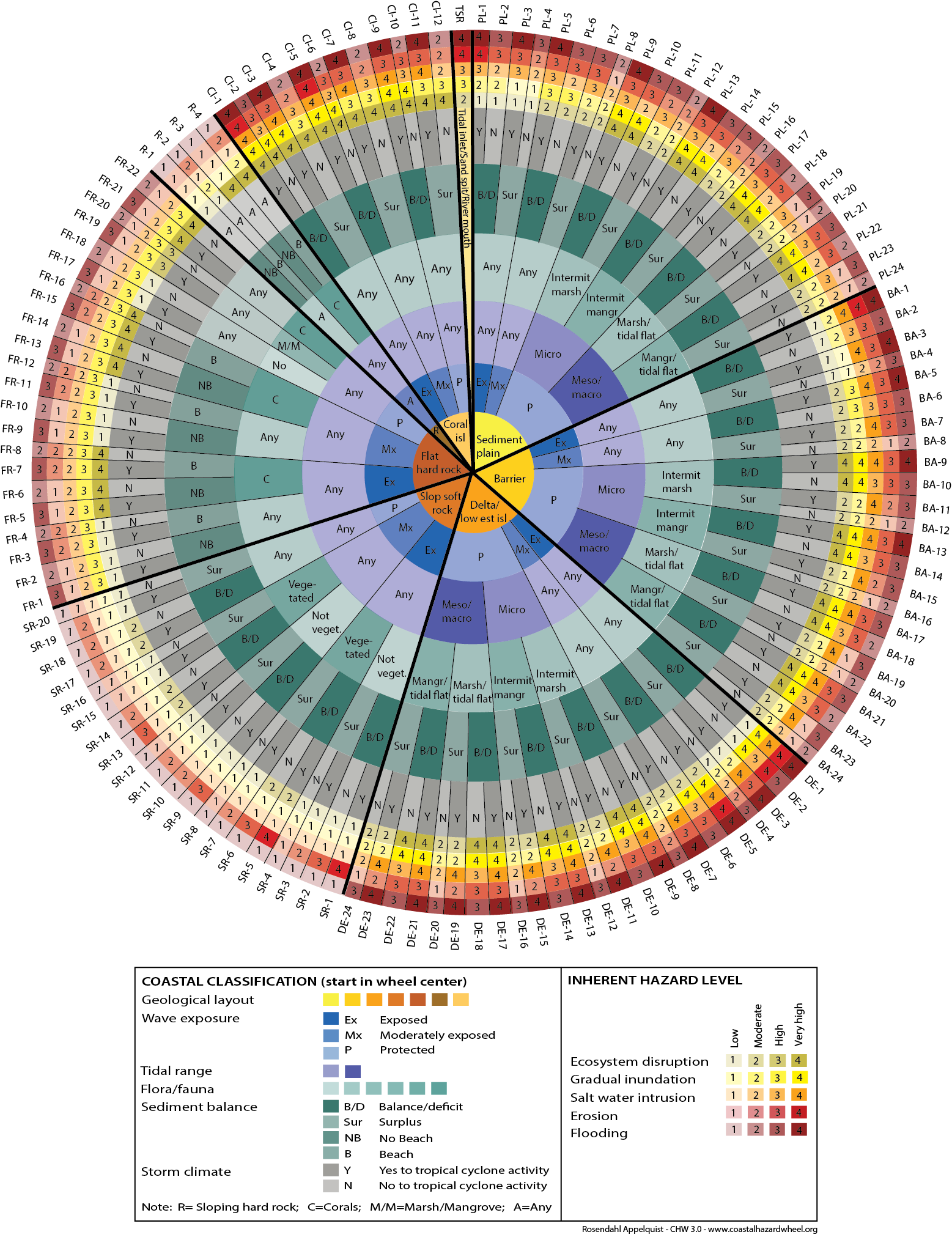The Coastal Hazard Wheel – a universal coastal adaptation language

The Coastal Hazard Wheel (CHW) is a new coastal adaptation language that aims to boost adaptation action at local, regional and national level and bridge the gap between scientists, policy-makers and the general public. It functions as a universal coastal adaptation system to address all coastal challenges simultaneously and can be used in both developed and developing countries for information and decision-support. It can be used for three main purposes:
- Multi-hazard-assessments at local, regional and national level
- Identification of relevant management options for a specific coastal location
- As a standardized coastal language to communicate coastal information
The CHW constitutes a key for classifying a particular coastal location, determining its hazard profile, identifying relevant management options and communicating coastal information. The system can be used to support coastal management at local to national level and covers all the main coastal hazards, hereunder the hazards of ecosystem disruption, gradual inundation, salt water intrusion, erosion and flooding. As the CHW incorporates climate change effects in the hazard evaluations, it is especially relevant for climate change adaptation. Furthermore, it is suited for Disaster Risk Reduction under the Sendai Framework.
The Coastal Hazard Wheel is taken forward by an international partnership of leading knowledge institutions and the core tool is translated to all the official UN languages, while the technical background information and the Coastal Hazard Wheel App currently is provided in English.
The Quick Start Guide can be downloaded from the right-hand column and via the link below, and provides a brief introduction on how to use the CHW to support coastal decision-making and information exchange. It begins with a brief outline of the coastal classification procedure and subsequently describes how to use the CHW for the three purposes listed above. Further technical instructions can be found in the Main manual, available here. Generally, the CHW is well-suited for facilitating communication and information exchange between different management levels, scientists and policy-makers, as the CHW codes can be easily communicated and interpreted.
Go to theCoastal Hazard Wheel platform
Lead Authors
Lars Rosendahl Appelquist, Thomas Balstrøm, Kirsten Halsnæs
Contributing Authors and Reviewers
Robert J. Nicholls, Matthew M. Linham, Jason Spensley, Joost Stronkhorst, Peter Koefoed Bjørnsen, Gareth James Lloyd, Gorm Jeppesen, Ole Vestergaard
(0) Comments
There is no content